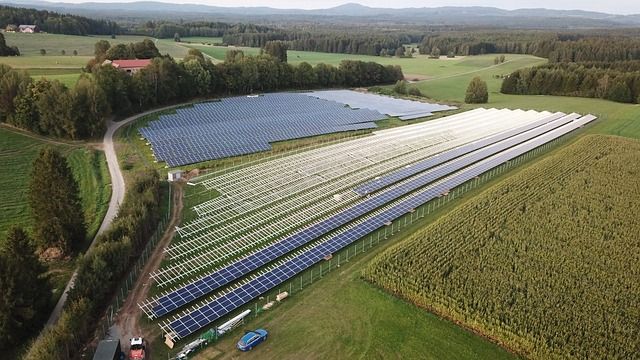In Poland, the sun is shining and the wind is blowing, so whether someone likes it or not, there is less and less room for coal in the energy mix. Renewable energy sources like photovoltaics are doing so well that they already embarrass the forecasts of the Polish Energy Policy until 2040 (PEP2040). And Poland is witnessing how the energy mix is changing beyond recognition.
The original assumptions of PEP2040 from 2021 indicated that the capacity of photovoltaic installations in 2030 should be at the level of 5-7 GW, and by 2040 – from 10 to 16 GW. Meanwhile, a few years earlier, at the end of May 2023, we approached 14 GW of solar energy.
At the beginning of 2021, we had about 400,000 in the country. prosumers, but in December 2021 there were already about 850,000. At that time, PEP2040 assumed that by 2030 there would be five times more of them, i.e. about 4 million. And now, seven years before that date, there are nearly 1.3 million of them in Poland. Forecasts for the coming years are only optimistic.
Installed capacity will double in just three years. Already at the end of 2025, 26.8 GW of PV installations will operate in the energy system, which means that Poland will be among the top three EU countries in terms of total installed capacity. It will become the fourth producer of electricity from the sun in Europe – predicts Grzegorz Wiśniewski , president of the Institute of Renewable Energy, in the report “Photovoltaics Market in Poland 2023”.
Photovoltaics is breaking many records
The increase in both installations and prosumers themselves translates naturally into production capacity. In July, photovoltaics gave a record 1.94 TWh of energy in total. This result is better than the previous record from June this year. by 3.9 percent and as much as 46.8 percent. since July last year. And since wind was added to this, RES generated 3.35 TWh of energy in July 2023, which is the third result in history, after this year’s March and May.
Thus, renewable energy sources took care of 28.7 percent. energy mix. It was better in this respect only once – in May this year. (30.4%). It is worth recalling that PEP2040 in the original version assumed the share of RES in 2030 at the level of 23%.
“In view of the extremely rapid development of photovoltaics, it is necessary to develop a long-term action plan to improve the conditions for the operation of PV sources in the power grid and to develop the national and European PV industry. A new energy strategy and a new sectoral strategy are needed – there is no doubt” says Grzegorz Wiśniewski.
And in the solar energy market, the unofficial race between the EU and the US continues. The U.S. Inflation Reduction Act provides, among other things, for a $400 billion state aid program consisting of tax and investment incentives for the development of new projects in the field of installation and local production of clean energy technologies, such as PV.
In response, Brussels has prepared the EU Solar Energy Strategy, under which the photovoltaic capacity in the EU is to swell from 136 GW in 2021 to 600 GW by 2030.
Coal is getting more and more scarce
And since there are more and more RES in our energy mix, it must necessarily be at the expense of coal. The photovoltaic jump contributed to a record low share of coal – at the level of barely 60 percent. (in June it was 61.8 percent).
No wonder that the sale and extraction of coal in Poland are now at a catastrophic level. In the first half of 2023, Polish mines produced approx. 23.2 million tonnes of coal.
This is 4.7 million tonnes less than in the same period a year ago. So we are talking about a decrease of 16.8 percent. It is also very bad with the sale of coal. From January to June, we sold about 22 million tonnes of coal, which is 6.4 million tonnes less than in the first half of 2022. This is a decrease of 22.5 percent.
Source: Bizblog

























